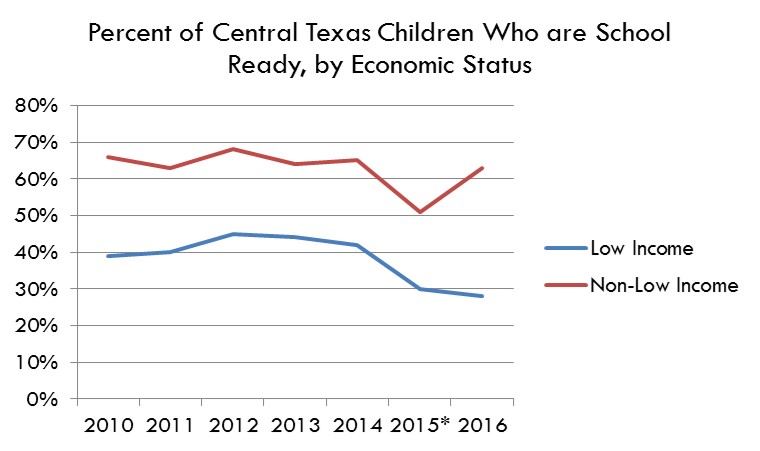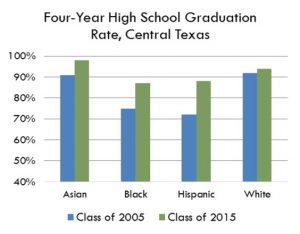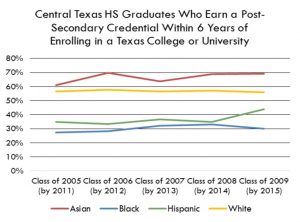
.
The 2017 CAN Dashboard provides an overview of the social health and well-being of Austin/Travis County and tracks our community’s progress in achieving four community goals:
- we are safe, just & engaged
- our basic needs are met
- we are healthy
- we achieve our full potential.
Are we achieving these goals? I am taking a closer look at each goal area and what the data have to say. Today we take a closer look at whether all people in our community are achieving their full potential and find that educational disparities exist from kindergarten through college in Central Texas.
.
Less than half of all students are “school ready” by the time they enter kindergarten. Many children enter kindergarten already behind their peers. Only 28% of low-income kindergartners were school ready, compared to 63% of children from moderate to high income households.
.

.
As the charts below demonstrates, the gaps in high school graduation rates by race/ethnicity have closed for the Class of 2015 compared to the Class of 2005, but the gaps with regard to college success remain more pronounced. For the high school graduating Class of 2009, about 30% of Black students and 44% of Hispanic students who enrolled in a Texas college completed a post-secondary credential by 2015. The college success rates for Whites (56%) and Asians (69%) were much higher. Even though college success rates for Hispanic students are lower than success rates for Whites and Asians, they have improved from 35% to 44% over the past five years.
.


.
Disparities exist in employment as well. Since the end of the Great Recession, unemployment rates have fallen for all races and ethnicities, however, disparities remain. The unemployment rate for Black residents of Travis County is about 10%, which is two-times the 5% unemployment rate for White residents. The Hispanic unemployment rate is 7%.


.
Visit the 2017 CAN Dashboard website to learn more about these and other indicators, including what local programs and collaborations are working to move the indicators in the right direction.